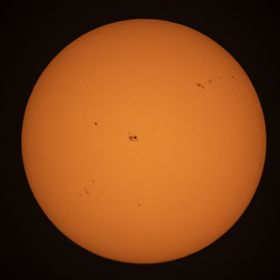
I had a session a couple of days ago trying to photograph two water droplets. This photo shows the first droplet rebounding after hitting the water and the seco...
Read more
I had a session a couple of days ago trying to photograph two water droplets. This photo shows the first droplet rebounding after hitting the water and the second droplet hitting the first. I have a lot to learn but I enjoyed the session.
Read less
Read less
Views
454
Likes
Awards
Fall Award 2020
Peer Award
Outstanding Creativity
Superb Composition
Top Choice
Absolute Masterpiece
Superior Skill
Magnificent Capture
All Star
Categories

 Platinum
Platinum
 PRO
PRO
 Platinum
Platinum
 Platinum
Platinum
LynetteRyan
October 04, 2018
Like this shot....I've tried similar...mine not as good as yours but will persevere!
Same photographer See allBehind The Lens
Discover more photos See all
Behind The Lens
Location
This photo was taken in my home on the kitchen table. You can see the table cloth at the bottom of the bowl. I didn't know much about water droplets back then.Time
This is one of the first water droplets that worked for me. I had just received my Pluto Trigger so I it up and attempted to make water collide! Trying to get the two water droplets to collide was time consuming but I finally got it. This photo was taken on June 18, 1917 at 10:58 PM.Lighting
With the pluto trigger they have you turn off all of the lights in the room, have you hold the shutter open for ~1.3 seconds and then let the flash capture the droplets for you. As you can see I used OCF on the right side. Since then I have moved to a three flash system. I am now experimenting with taking the droplets with room lighting and still using three flashes.Equipment
I used my Canon T5i with the 18-55mm kit lens on a tripod. I used the Canon 430EX II speedlite. It was interesting to learn about the speed light and how I could change the various setting and how much of a difference the change would make. I would also experiment with the f/stop and ISO. I learned a lot of things not to do.Inspiration
I have seen very beautiful colliding water droplets and they inspired me to learn something new. I first started out using a straw, a predetermined focal point, a tripod for my camera, and a remote to take the photo. Once I had my focus set (manual), I would put the straw in a glass of water, put my thumb over the top of the straw, position the straw and then let a little air into the straw so drops would form. Then I would hit the remote and hope I got some collisions. Most of the time I didn't but I did get some and learned there had to be an easier way to do this. After researching I would a number of ways to do it.IEditing
For post-processing I use LR and PS and I did a few adjustments. One was to crop the photo in LR in so you could see more of the droplet rather than a lot of negative space. I also adjusted the exposure, highlights, shadow, whites, and blacks. Some not so much and others more that I thought I would need to. I would normally use PS to get rid of any out of focus splashes or small drops that distracted from the subject. On this photo I didn't do much with PS.In my camera bag
I only have two cameras so normally I pack my Canon 80D, Tamron 24-70, Canon 100mm macro or Canon 75-300mm and a Canon 50mm. If I am going to shoot landscapes or starscapes I will bring my Tamron 10-24. If I will be shooting astrophotography I will bring the 10-24mm and my Tamron 150-600mm lenses. I also use the 150-600 for birding and racing. Along with the lenses I will also bring a flash or two, tripod, and cleaning supplies.Feedback
First thing to remember is to not get frustrated, even though it looks simple capturing water droplets is complex. You will need time and patience. I recommend that you research colliding water droplets. Look into the equipment that is out there but also look at the simple ways of doing it, say a plastic bag with a small hole it in. You can get a cheap flash that will allows you to use 1/64 power or 1/128 power. Set you system up so you can use different backgrounds (you'll be surprised as to what the result will be). Experiment, experiment, and experiment! Find out what works for you. Many of the complicated water droplets images you see are produced with equipment that cost a $1,000 US or more and you can create beautiful collisions on a much smaller budget. I one thing you should do throughout the process is have fun. If you are not having fun, it will show in your end result.











































